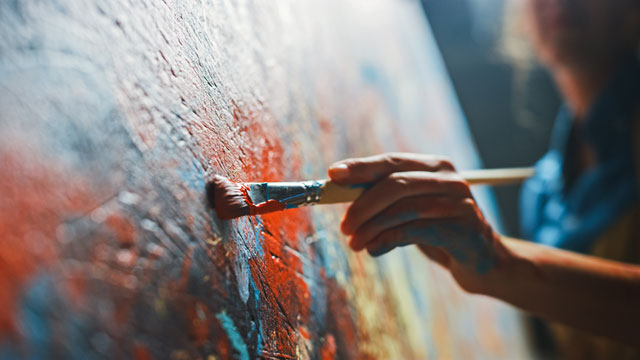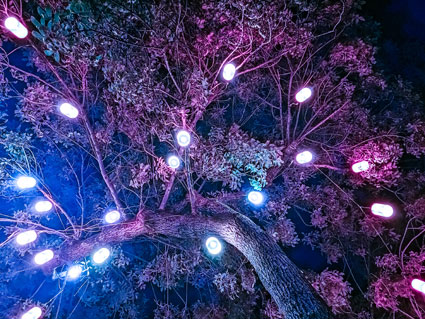INTRODUCTION
Inspiration for a Safari style rests on the idea of taking a rugged trip into the unknown to explore exotic lands and animals. Imagine decor from the novel Out of Africa by Isak Dinesen, or even the 1985 film adaptation. The colors are neutral, in some cases pops of an unexpected bright yellow or blue serve for excellent contrast. Animal prints, heavy woods, leather seating, and linen fabrics help bring a Safari style to life.
The resulting look is an exciting take on neutral colors with a focus on African animals and a rugged sense of adventure. African tribal patterns can be interwoven into the scheme for additional color and interest.
The Safari style can be adjusted to suit any room, but living rooms and bedrooms make excellent canvases. Even a child's nursery can be decked in sophisticated animal prints and adorned with large photos of elephants and giraffes. Both larger and smaller spaces work, but pay attention to the size and amount of animal print used to maintain proportions, as a smaller space can be easily overwhelmed by too much drama.
In this article you'll learn:
- Top color choices for achieving a Safari style room
- Textures and fabrics most aligned with the decorating theme
- Finishing touches to consider utilizing
- Style Lesson- Working with drama
- Developing a Greco-Roman meets Safari Style
COLORS
Safari style should incorporate at least one animal print. Once a print is decided upon, the rest of the color scheme easily falls into place. A wonderful aspect of animal prints is their ability to look good with most colors, so a room can extend beyond neutral colors of browns, greens, rustic reds, blacks, and creams.
Some example color palettes include:
- A rustic inclination designed with giraffe prints accenting a room filled with creamy light browns, a few mahogany furniture pieces, and African patterns featuring yellow and black.
- A modern take on Safari style featuring a grey palette accented with forest green and zebra stripes.
- A whimsical take with white furniture punctuating cream fabrics, a tiger patterned rug, and bright yellow animal figurines.
TEXTURES AND FABRICS
Quite necessary to tying together the Safari look, animal skins (fake or real) make strong dramatic statements. For this reason, aim to keep the prints at a maximum of two styles. Consider patterns inspired by zebra, tiger, cheetah, or giraffe. Steer clear of cow, as it strays from the Safari connotations. When applying the animal prints, one can either go intentionally big or subtle:
1) Going big means a zebra striped bed spread or cheetah wallpaper- it's dramatic, intense, and, when done correctly, looks incredible. Going this route means the surrounding decorating elements need merely to complement the print in less dramatic style and coloring.
2) The subtle option is just that- small additions of the animal prints to add interest. An impressive collection of African masks displayed on a wall takes the dramatic focus while a wooden carved chair with a tiger print upholstered seat serves as a complement.
Too many smaller additions of the print can become disorganized and even kitsch, for example a bathroom decor set (curtain, toothbrush holder, trash bin, cup) all designed with the same cheetah print results in a mundane bathroom lacking sophistication. This is due to the lack of interest created from variables. Utilizing other fabrics and textures incorporates those much needed variables.
Within the Safari style, animal pelt style blankets are great elements. Avoid anything implying familiar forest creature, the look should be exotic African animals. For added colors, utilize African patterned fabrics. There are colors and patterns suitable for any direction of Safari style decor.
For texture, look for baskets and mats made from reed and straw. Also, sisal is an excellent carpeting option. The lightly rough texture comes from the agave plant and yields a closely woven finish that is rougher than piled carpeting, but softer than other natural fibers. For a buttery soft contrasting texture, add leather components. Remember to balance fabrics and textures with opposites for more interesting decor.
FURNITURE STYLES
Big, heavy furniture is ideal to evoke the sense of rugged exploration. Intricate carvings are welcome as are unique pieces. Balance the unique and dramatic pieces with complementary, simpler items.
When choosing furniture, keep in mind the fundamentals of proportions: don't cram a huge heavy cabinet into a tiny dining room, instead stick with smaller versions of equally rustic furniture. Even going a bit lighter in wood finish will shrink pieces down, just be sure the color tones match the overall palette. Great styles to consider include:
- Campaign desks or tables which give the sense of mobility, and often can expand based on the tabletop, making them perfect for smaller spaces that sporadically entertain lots of guests.
- Pieces like wooden dressers with faux ivory inlay are those special adornment pieces. They represent all the unique furniture that can't necessarily be described, but fits perfectly into the Safari room. Keep an eye out at vintage and thrift stores for these one-of-a-kind pieces.
As always, remember a coat of paint and new hardware goes a long way.
For chairs, find a balance between simple and ornate. Slipper styles, sans tufting, will look great alongside ornate chests, as will intricate masterpiece chairs alongside simple wooden shelving. Find the balance.
Don't go too traditional with couches, but also not too plush. Stick to straight backed with clean lines, possibly even with simple wooden arms and legs. Leather chairs and couches will fit in nicely within the Safari theme, and a dramatic statement can be made with animal print upholstery, as long as it's surrounded by complementary elements.
- For a romantically inclined Safari bedroom on a tight budget, a four poster bed draped in gauzy fabric can be imitated by securing rope from the ceiling then hanging the fabric from the rope. The tenting effect evokes Safari exploration, while the gauzy fabric offers an ethereal, romantic note.
- A masculine office benefits from a dark stained campaign-style desk and heavy, leather with iron chair. The darkness of the furniture evokes a strong masculine feel.
- A whimsical Safari nursery benefits from a lighter toned wooden crib topped with a mosquito net for additional softness and a sense of comfort. A wooden rocker or even slipper chair boosts the cozy feel.
It's evident when it comes to Safari style, as with most styles, furniture isn't necessarily one size fits all. Use these tips as a guideline for purchasing pieces, but in the end ensure everything works well together and represents the desired themes. Of course the styles are further enhanced with the addition of finishing touches.
FINISHING TOUCHES
The final elements within a Safari style room range from a traditional track to more modern and bright. For a traditional style, hang rustic carved African masks, arrange iron animal figurines, and stack well worn leather detailed trunks and luggage for an exploration feel. Don't hesitate to add personal mementos from travels.
A modern spin can take those same animal figurines, but spray painted a bright yellow or green accent color. Shiny gold elements such as a gold monkey lamp base add freshness and a modern whimsy.
In either sub themed room, consider hanging fabric from the ceiling for a tenting effect, or draping a mosquito net in the corner. Also, a carefully chosen African rug or Kilim can pull all the elements together and warm up the space. Don't forget tribal pottery, paintings, and photographs set in the African Serengeti.
STYLE LESSON- WORKING WITH DRAMA
A few of the previously discussed styles incorporate levels of drama, namely Greco-Roman and Aristocratic Romance. Both of these styles utilize opulence in the form of generous fabrics and intricate carvings to create drama. Drama works by demanding attention. It's not subtle, and if done incorrectly, can disrupt a room's mood and focus.
In the fabric section, we touched on the use of animal print fabrics in decor, specifically how much is enough and what needs to be done in regards to the other decor elements to work well with the print. You learned not to overwhelm a room with too many focal points, and as a Safari style naturally showcases interesting fabrics and furniture, it's an easy style to add or go overboard on drama.
When adding a dramatic element, it will become a focal point, meaning the eye will naturally be drawn to it. The downfall for drama occurs when too many focal points crave attention at once- it makes a room too busy, too overwhelming, and unbalanced. Therefore a good method for adding drama carefully is by working in threes: walls, physical area, and floor. Keep the drama balanced among these three areas. For example, a bold floral painting on the wall demands attention, so simple green stripes and white furniture can quietly live in the background. Attention can then be picked up again by large floral motifs on the rugs. The result is dramatic walls, calm area, dramatic floor.
The opposite works as well, where the physical space calls for attention. An ornate table set with gold rimmed china, cheetah print napkins, and vases of orchids becomes the focus in a solid walled room with neutral flooring. The result is calm walls, dramatic area, calm floor.
Going a step further, drama can be balanced within the physical area. A seating area with neutral seating is sparked up with exotic birds of paradise on tall side tables. This idea goes back to previous discussions of balancing fabric and furniture choices, but here is applied to the additional elements within a room.
Choosing a wild fabric or very unique piece of artwork or furniture isn't the only step of creating a focal point. Use lighting and positioning of objects to make the most of drama. These techniques consider a the viewpoint of people entering and utilizing the room. Shine light on a piece of artwork or shelf to draw attention to those areas. Position dramatic items front and center, as to be the first things seen when one walks into the room, or the main view when sitting on the couch. Having the dramatic objects in the background or as secondary sights will downplay the drama, which in some cases can be desired.
As with most things in decorating, drama is all about balance and placement geared towards a desired outcome. It always helps to know what one hopes to attain within a room before beginning any decorating project, and adding drama in a systemized way is no different.
SURPRISING FIT- GRECO-ROMAN MEETS SAFARI STYLE
Greco-Roman style incorporates many of the natural elements Safari style does, but with a bit more opulence, making the fused style reminiscent of a luxurious exploration.
Stick to one animal print to keep the Safari theme in check. A tiger print evokes the Safari style and represents the Ancient Roman tigers, making it a sound choice. For the windows, think simplicity and structure.
Furniture that satisfies both styles would include weathered wooden pieces. Look for carvings and interesting details. Also include a few glass topped pieces, maybe even with gold gilding or legs. This addition of gold works as a subtle nod to the Greco-Roman style.
Keep the additional elements tidy, sparse, and interesting. Some good choices include stone pottery and urns, gold framed artwork, and a stone bust or two. Stone carved animals satisfies both themes and carefully chosen artwork can infuse additional color into the room.
The ending result should be comfortable, natural, yet retain a level of luxury and exploration. Feel free to incorporate a dramatic focal point or two, as these styles thrive off drama.
SUMMARY
The Safari style room showcases rugged exploration. It's comfortable yet celebrates intricate craftsmanship and exotic animals. Be sure to incorporate some animal prints into the decor scheme, paying attention to how much is added and the complementing elements. A neutral color palette works well with the animal prints and welcomes bright accents of unexpected colors.
Choose heavy, sturdy furniture that is also comfortable. Wooden pieces can be lighter grain for smaller rooms and suitable for styles going in a gentler direction. Couches should be comfortable, but not too plush, and slipper chairs, sans tufting, work beautifully. Get some of the seating in leather to include another texture.
Final touches range from African tribal masks to photography of African animals. Use natural baskets and well worn leather trimmed luggage for storage. Scattering animal figurines adds a whimsical touch. Be sure to include an element of drama, but find the delicate balance between just enough and overwhelming.
If decorating in Greco-Roman Safari fusion sounds fitting, opt for a clean sophisticated look that celebrates luxury exploration. Natural elements and a neutral color palette incorporate both styles, while gold and glass touches boost the casual Safari style into Greco-Roman status, culminating in a lovely option for a living room or dining room.
Key elements for achieving a Safari inspired style:
- Theme: An exciting take on neutral colors with a focus on African animals and a rugged sense of adventure.
- Color: Neutral colors (browns, greens, blacks, rustic reds) are traditional for Safari style, but can be sparked up with a bright yellow or green accent color. Don't forget the animal prints, try to incorporate at least one, but tread carefully with more than two.
- Textures and fabrics: Juxtapose the animal print fabrics with colorful African prints, animal pelts, linen, and leather. Add rustic natural fiber baskets for storage and sisal rugs for texture underfoot.
- Furniture style: Big, heavy furniture is ideal to evoke a sense of rugged exploration. Intricate cravings are welcome as are unique pieces. For seating, don't go too plush but stay comfortable with clean lines. Couches with wooden frames are simple yet interesting and slipper style seats work well.
- Objects to pull it together: Keep underlying themes in mind, as always, but opt for African carved masks, worn leather trimmed luggage, animal figurines, canvas from the ceiling for a tented look, and tribal style pottery.
Words of caution:
- Steer clear of too many animal prints or kitsch pieces such as glass topped giraffe statue tables, or a matching set of bathroom objects.
- When adding drama to a room, determine the focal point then work on complementing it, not competing for it.
- The Safari style works well with heavy, larger pieces, which oftentimes are dark stained. Feel free to adapt the style per preference for room size, opting for lighter stained woods in smaller rooms or more feminine versions of Safari style.




























